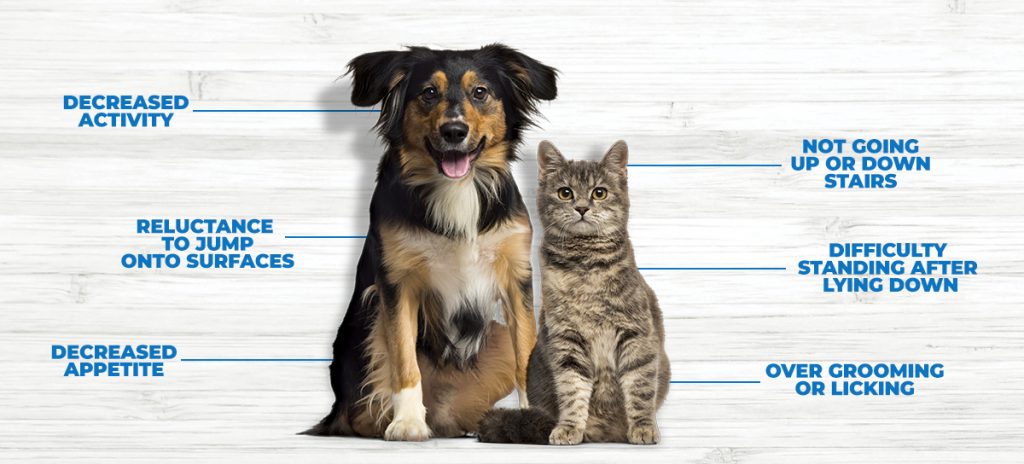We want your pet to be as
Comfortable
as possible. Pain in animals is just as significant and just as common as in people. When it comes to pain thresholds, each animal is unique. Dogs and cats can manage to hide their pain well. We, along with you as a loving pet owner, do not want to see your best friend feeling any discomfort. Pain management is very important to us at Creekside Pet Care Center.

DIFFERENT KINDS OF PAIN
Pain management has become an important issue in veterinary medicine. Pain management will improve the recovery process, whether from illness, surgery or injury. Best of all, because it reduces stress and increases a sense of wellbeing, pain management may even help your furry friend live longer.
ACUTE PAIN
Acute pain comes on suddenly as a result of an injury, surgery, inflammation or infection. It can be extremely uncomfortable for your pet, and it may limit his or her mobility. The good news is that it’s usually temporary. It generally goes away when the condition that causes it is treated.
CHRONIC PAIN
Chronic pain is long-lasting and usually slow to develop. Some of the more common sources of chronic pain are age-related disorders, such as arthritis, but it can also result from illnesses such as cancer or bone disease. This pain may be the hardest to deal with because it can go on for years, or for an animal’s entire lifetime. Also, because it develops slowly, some animals may gradually learn to tolerate the pain and live with it. This can make chronic pain difficult to detect.

Animals instinctually hide pain. How do you know when your pet is hurting? Look for any of the following signs:
- Being Unusually Quiet, Listless, Restless or Unresponsive
- Whining, Whimpering, Howling or Constantly Meowing
- Biting
- Constantly Licking or Chewing at a Particular Part of the Body
- Acting Funny and Out of Character, Whether Aggressively or Submissively
- Flattening Ears Against the Head
- Hiding
- Reluctant to Move
- Having Trouble Sleeping or Eating
- Seeking a Lot More Affection than Usual
- Unable to Get Comfortable (e.g., Constantly Changing Positions to Find the Most Comfortable Position)
- Trembling
Because our fur-babies aren’t able to tell us when something is wrong, it’s important for you, the pet parent, to take note of any changes in their behavior. Look for any of the following signs that maybe your pet’s way of saying “I hurt.”
Many animals, especially cats, naturally disguise signs of pain to protect themselves from predators. However, the lack of obvious signs does not mean they aren’t experiencing pain. If the injury, illness or experience is one that sounds painful to you, it is likely painful to your pet. Modern pain management medications and techniques can safely and effectively control pain with little to no side effects.
TREATMENT CHOICES AND CONSIDERATIONS FOR PAIN
There are a variety of pain medications currently available for pets. Aside from pill form, many drugs come in easily administered forms such as liquids, skin patches or gels. There are also new analgesic (i.e., pain-reducing) products to help treat your pet after an injurious trauma and treat chronic pain. Non-steroidal anti-inflammatory drugs (i.e., NSAIDS) are often used to treat orthopedic-related pain with fewer side effects. Other medications, most notably narcotics, can be used concurrently as the condition dictates. Certain supplements (e.g., fish oils, glucosamine and chondroitin sulfate) can also be employed, especially for chronic pain caused by osteoarthritis and degenerative joint diseases.
It is very important that you do not give your pet any medication without consulting with your veterinarian. Certain painkillers, including acetaminophen (i.e., the active ingredient found in Tylenol) and ibuprofen (i.e., the main ingredient found in Advil and Motrin) or combinations of medications can be toxic to pets in very small doses.



